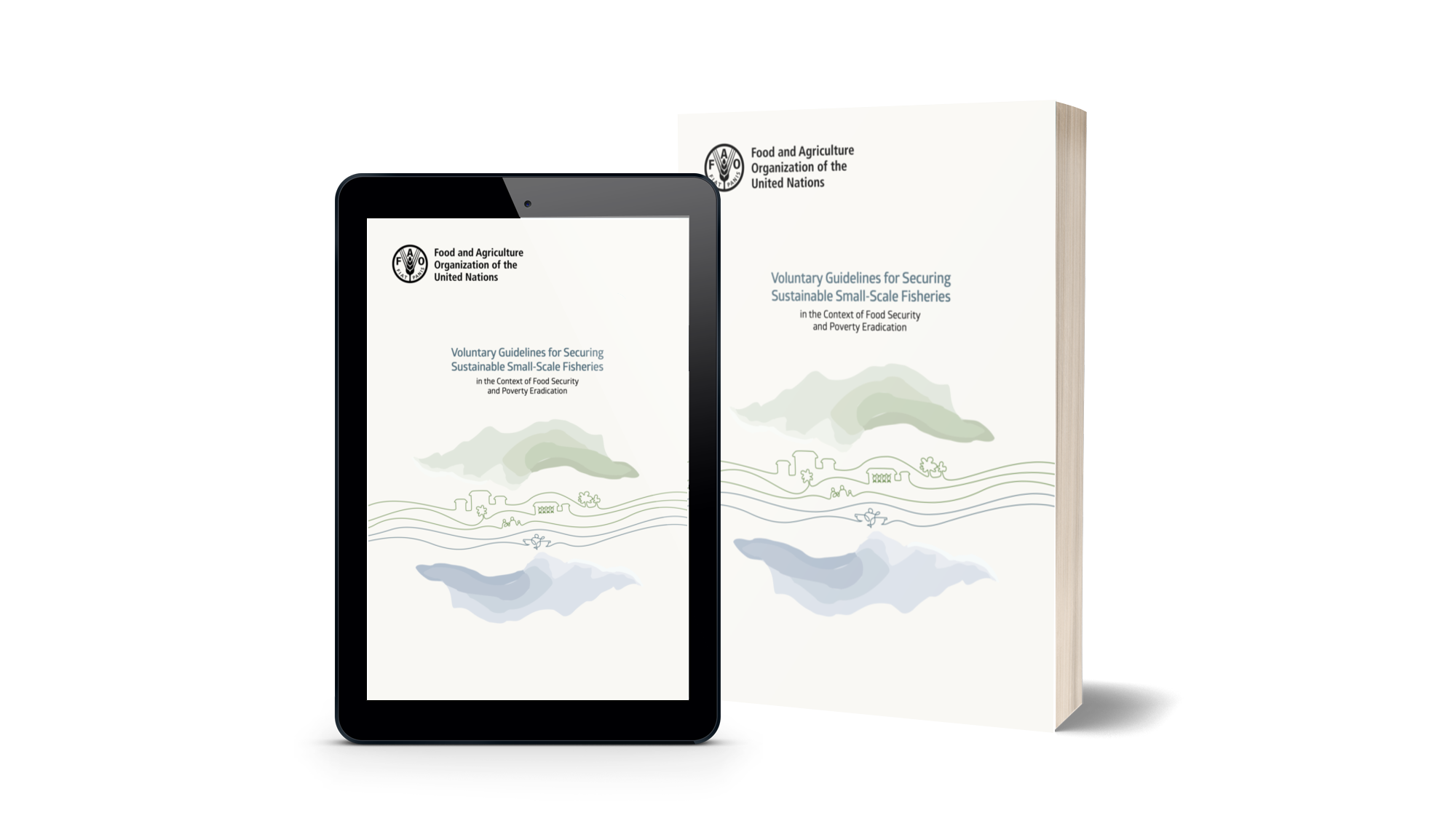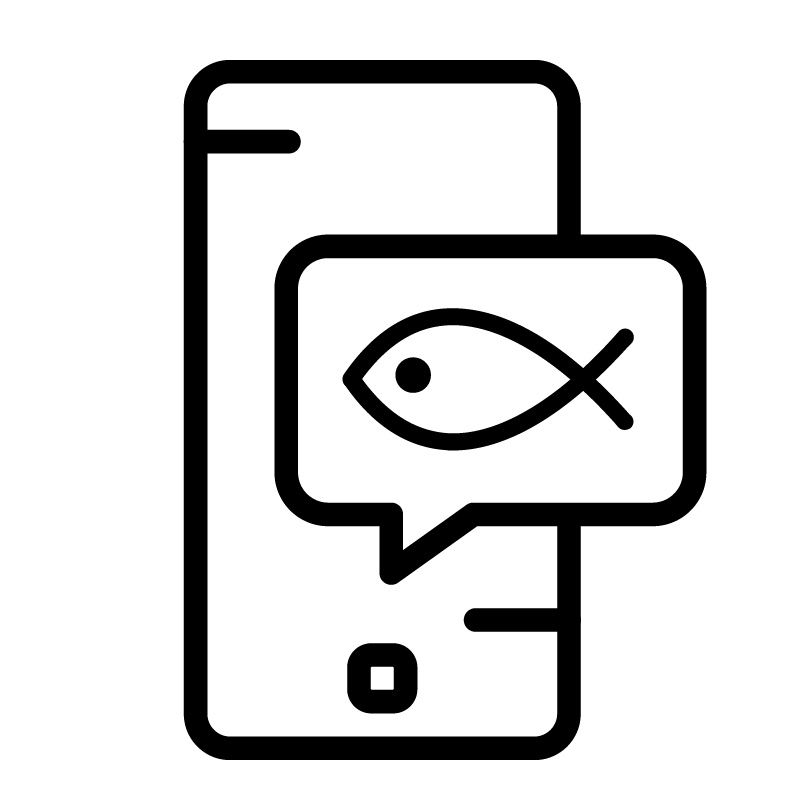Implementation
The NPOA-SSF document developed in Stage 2 is the key document detailing the what, when, how and by whom relevant actions are performed in implementing the SSF Guidelines. Stage 3 of the NPOA-SSF process is a cycle of implementation , monitoring and evaluation. The actions set out in the NPOA-SSF document will be implemented and regularly monitored, evaluated, reviewed and adjusted based on the lessons learned.
The implementation of the NPOA-SSF should be considered as a participatory project involving multiple partners, actions and deliverables.Its delivery needs to be managed in a structured way, guided by an inclusive national task team. Standard operating procedures clearly setting out how those involved will work together can be useful tools in this stage.
Monitoring is given special focus in the SSF Guidelines Part 3, Chapter 13. The implementation of an NPOA-SSF is a time-bound process that takes place over a specified period, for example five years. Its progress needs to be monitored and evaluated during this time. Only by learning from this experience - both the successes and the failures - will it possible to improve national support to small-scale fisheries.
Once implementation is underway, the NPOA-SSF will need to be reviewed and updated on a regular basis, based on the monitoring and evaluation process. The result of Stage 3 is thus a recurrent review and update of NPOA-SSF.
Here you will find the steps, guidance and templates for Stage 3: Implementation.
This section describes the roles and leadership you might expect to have in place to implement the NPOA-SSF. The specific structure and titles will depend on the agreed arrangements for your NPOA-SSF.
You must clearly describe and communicate the roles of individual staff and any officeholders or groups involved in implementing the NPOA-SSF. These will form part of your standard operating procedure (SOP).
Process
- 3.1.1 Define project roles
Output(s)
- Project roles
This section describes how to set up SOPs.
A template is provided to assist you.
Process
- 3.2.1 Develop SOPs
Output(s)
- NPOA-SSF SOPs
This section suggests setting up a single information resource and gives you ideas on what you might include in that knowledge base.
Process
- 3.3.1 Agree on how to manage the information
Output(s)
- Centralized knowledge base
This section describes the various communication activities you should consider maintaining throughout the implementation of the NPOA-SSF.
Process
- 3.4.1 Communicate internally and externally
Output(s)
- Communication strategy
The NPOA-SSF is a time-bound process that takes place over a certain period, typically around five years. Its progress needs to be monitored and evaluated during this time. Only by learning from this experience – both the successes and the failures – will it be possible to improve national support to the small-scale fisheries.
Background
There are three, interlinked elements to this step.
Monitoring: a process is put in place to check and measure progress towards (i) completing activities and outputs in the logframe; and (ii) achieving the intended outcomes and impacts.
Evaluation: a formal process by which the monitoring results are studied and the progress of the Action Plan assessed.
Learning: to put together all of the above, to learn from the successes and failures of the Action Plan’s implementation in order to strengthen future planning.
Process
We suggest a combination of regular (for example, annual progress reports and periodic reviews, as follows.
- 3.5.1 Compile regular progress reports
- 3.5.2 Conduct a mid-term review
- 3.5.3 Conduct an endline review and evaluation
Output(s)
- Regular NPOA-SSF progress reports
- Mid-term review
- Endline evaluation
States should recognize the importance of monitoring systems that allow their institutions to assess progress towards implementation of the objectives and recommendations in these Guidelines.
Assessments of the impact on the enjoyment of the progressive realization of the right to adequate food in the context of national food security and on poverty eradication should be included. mechanisms allowing the results of monitoring to feed back into policy formulation and implementation should be included. Gender should be taken into consideration in monitoring by using gender-sensitive approaches, indicators and data.
States and all parties should elaborate participatory assessment methodologies that allow a better understanding and documentation of the true contribution of small-scale fisheries to sustainable resource management for food security and poverty eradication including both men and women.
Relevant consultation resources

Category 3
Lorem ipsum dolor sit amet, consectetur adipiscing elit, sed do eiusmod tempor incididunt ut labore et dolore magna aliqua. Ut enim ad minim veniam, quis nostrud exercitation ullamco

NPOA-SSF Tanzania
The United Republic of Tanzania has prepared a National Plan of action (NPoA) to ensure the effective implementation of the FAO Voluntary Guidelines for Securing Sustainable Small-Scale Fisheries in the Context of Food ...

NPOA-SSF flyer
This flyer brings an overview about the National Plan of Action for Small-scale Fisheries (NPOA-SSF), which is a systematic approach to the implementation of the Voluntary Guidelines for Securing Sustainable Small-Scale Fisheries in the Context of Food Security and Poverty Eradication (SSF Guidelines) at the national level, presenting the definitions, stages of implementation and FAO's support in the development of National Plans of Action for Small-scale Fisheries.
Explore the other stages
Contact

